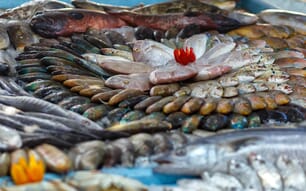Stanford researchers have developed a highly detailed computer simulation that will help find suitable sites for aquaculture and help monitor any plumes of waste wafting through the waters.
One of the fastest-growing segments of livestock farming in the United States is aquaculture, according to Roz Naylor, a Stanford professor of environmental Earth system science. And like any other form of livestock, fish generate waste.
But just what happens to the waste produced by coastal aquaculture has largely been a matter of conjecture.
"For many years, people have assumed that because of the ocean's size, because of the energy in its currents, that any substance you introduced into the ocean would quickly be diluted into concentrations that were barely detectable," said Jeff Koseff, professor of civil and environmental engineering.
Now Mr Koseff and Ms Naylor, together with Oliver Fringer, assistant professor of civil and environmental engineering, and a team of colleagues, have developed a computational model that allows researchers to predict where the effluent from a coastal fish farm would go. The answer may not always be appealing to down-current swimmers and surfers.
"We discovered that the state of the natural environment around fish pens can dramatically affect how far waste plumes travel from the source," Mr Koseff said. "This suggests that we should not simply assume 'dilution is the solution' for aquaculture pollution."
The simulation incorporates the influence of variables such as tides, currents, the rotation of the Earth and the physical structure of the pens in calculating the dispersal pattern of the waste.
"These plumes actually remain quite coherent at very long distances from the source and could become a major pollution problem in coastal regions," Mr Koseff said.
Ms Naylor and Mr Koseff said the model should prove valuable in selecting appropriate sites for future fish farms. Knowing the amounts of feces and uneaten food that are generated by pens, researchers will be able to predict how that dissolved waste will travel from a particular location, given local conditions.
Ms Naylor said the model will likely show that some locations previously thought appropriate for fish farms are actually not suitable, but she doesn't think the aquaculture industry will necessarily see that as a bad thing. Having clearly defined boundaries of where aquaculture is acceptable will help the industry avoid conflict with other users of coastal waters.
"A lot of the industry people that I have talked to are not working against the environment, they are really trying to make aquaculture work, and this would provide a useful tool for them," Ms Naylor said.
Ms Naylor, Mr Koseff and their colleagues will be publishing their findings in an upcoming issue of Environmental Fluid Mechanics. The paper is online now.
Ms Naylor said their findings are quite timely, in light of legislation in the works at both the state and federal levels.
In 2006, California passed the Sustainable Oceans Act, aimed at protecting the biologically rich waters off the coast while also recognizing the importance and economic value of providing fresh seafood.
Naylor said that a draft of the regulations to implement that legislation is currently under review and this new modeling tool should help in setting guidelines for locating and monitoring aquaculture.
At the federal level, the National Oceanic and Atmospheric Administration is taking public comments through April 11 on a draft of a national aquaculture policy.
"After the bill is passed, rules and regulations will have to be written around it and what we are providing now is a tool to help with that," she said.
Mr Koseff acknowledged that some people might balk at relying on a computer model to guide regulations.
"We understand and recognise the limitations of the simulations," he said. "But we have confidence that the physics that we are representing in the model are realistic and our results are very representative of what happens in a near-coastal environment."
Naylor said that for an aquaculture operation to be economically feasible, a lot of pens will likely have to be concentrated in one area, making waste a significant concern.
"I also work a lot in terrestrial livestock, and I think the dissolved wastes that come out are one of the worst aspects of intensive animal raising," she said.
"If we are really thinking about getting our animal protein from fish in the future, and it is coming from net pens that are in the ocean, one of the big fears is, are we going to have feedlots of the sea?
"We would really like to completely avoid the problems we have seen in terrestrial livestock. That would be the ultimate goal and this model can help achieve that."
Finding Suitable Environmental Sites For Aquaculture
Aquaculture is a booming industry, but that means effluent from fish farms will be booming, too. What happens to that drifting waste in coastal settings is critical to maintaining a healthy environment, but little has been known about how that waste travels once it is no longer down on the farm, writes Louis Bergeron for Stanford University.

